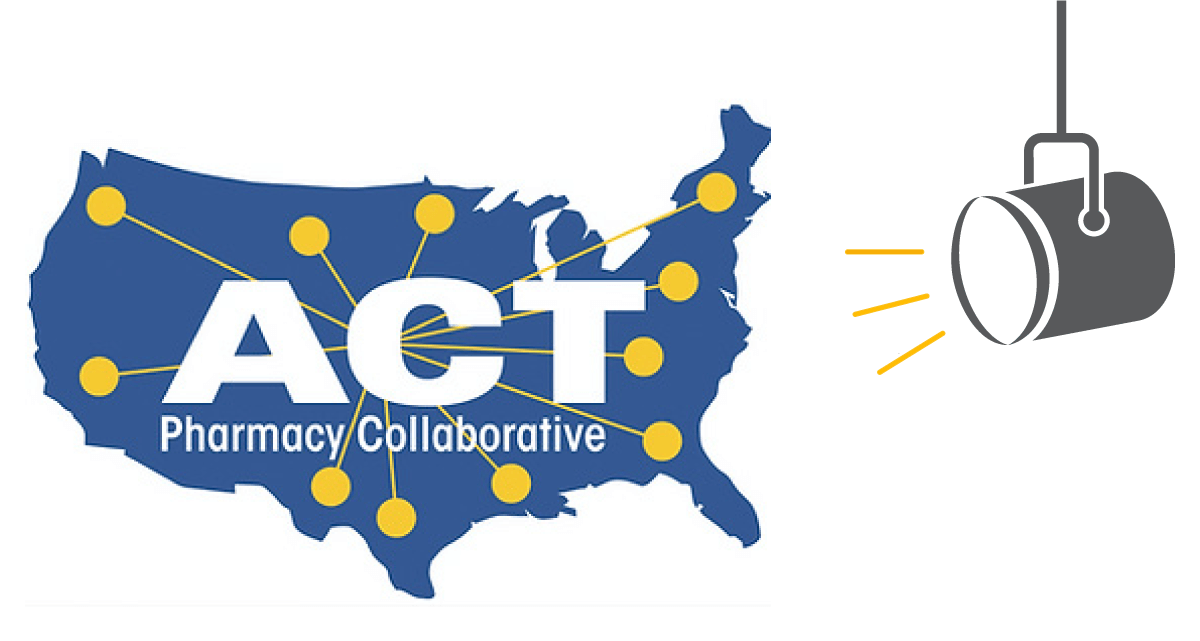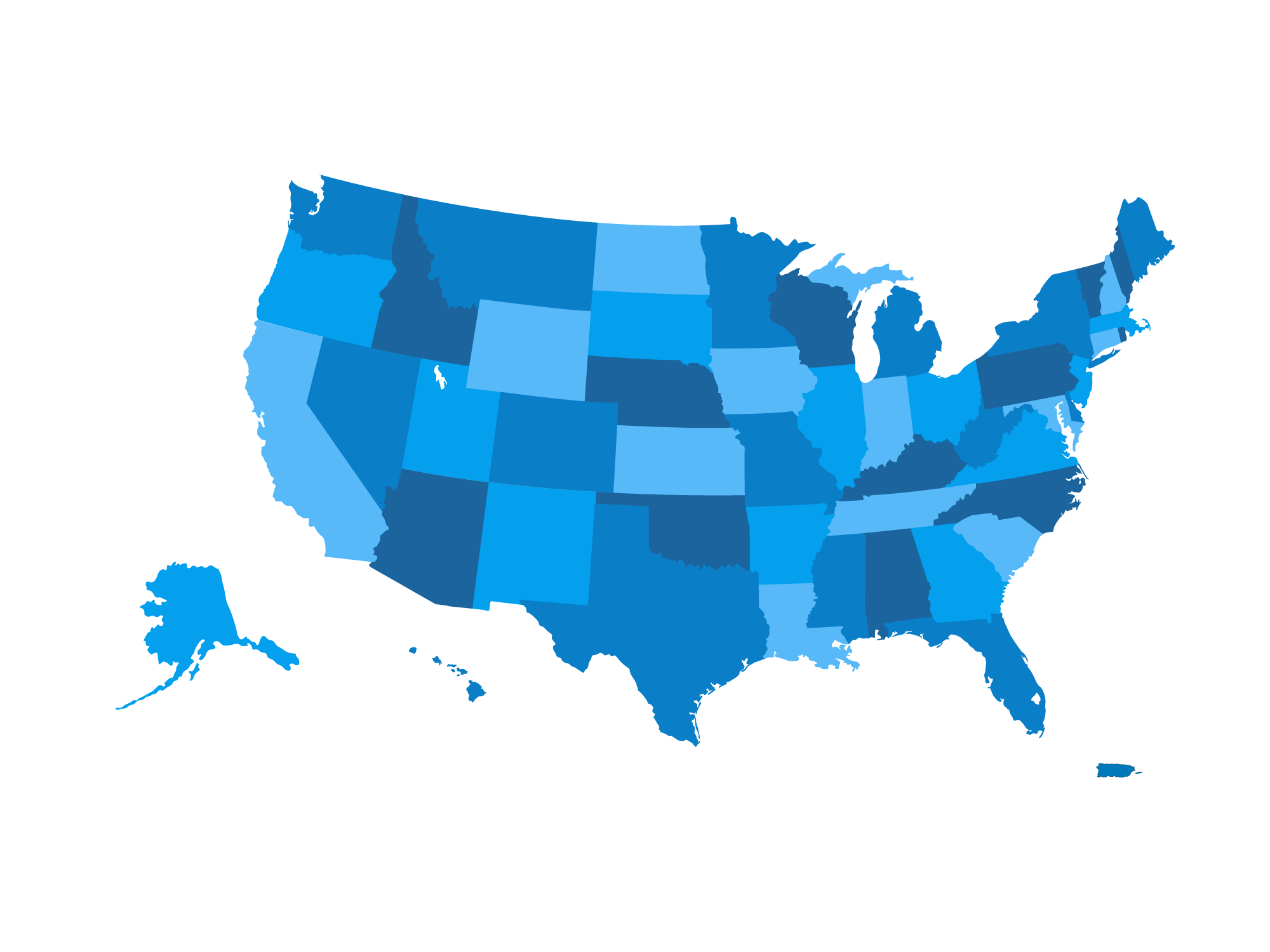Stories Across the Nation
The 50 Stories from 50 States Challenge will deliver stories of pharmacists and their teams caring for patients in community pharmacies. The intent is for the stories to inspire and educate students as well as professionals about the importance of pharmacies, including relationships with the medical community, community organizations and academia, said Dr. Melissa Somma McGivney, a professor and associate dean for community partnerships at the University of Pittsburgh School of Pharmacy.
The project also is intended to send a message to state and federal lawmakers about the value of community pharmacy as a point of healthcare access and care nationwide. Current laws limit the ability of the pharmacist to be recognized as a provider of healthcare services at state and federal levels.
“From my perspective, community pharmacy practice is evolving quickly,” McGivney said. “The 50 Stories from 50 States Challenge represents all the change that is happening. We need all the schools to be sharing and encouraging students to learn about what is being done in community pharmacies. It’s not the same as it historically has been.”
“Together we want to amplify all the positive, impactful patient care that is happening nationwide,” McGivney added. “And so this 50 Stories from 50 States Challenge meets these criteria. We’re uniting together to tell a story, to amplify what is occurring around the country.” As for the regulatory message, she pointed out that “pharmacists are providers of patient care. With drug reimbursement at an all-time low, the business of community pharmacy is changing.”
While about 80 percent of chronic disease treatment is through drug therapy, “chronic care is often disjointed and complex,” she said. “There are a lot of forces coming together. Pharmacists can help meet these needs.” Among the many issues: People needing access to care, such as in rural areas, where there is a shortage of primary care practitioners. In the meantime, healthcare payers, the insurers, are demanding quality metrics with uneven funding.
Dr. Miranda Steinkopf, an Academic Leadership and Education Fellow at AACP who has been instrumental in working on the project, echoed the idea that pharmacy practice is experiencing unrelenting changes and the importance of initiatives like the 50 Stories from 50 States Challenge. “Community pharmacy is transforming at a rapid rate, and the ACT Pharmacy Collaborative wants to help equip pharmacy faculty members to keep up with what is happening out there in practice,” Steinkopf said. “A big part of this is uniting all the right stakeholders to support the transformation of community-based pharmacy practice.”

Under the 50 Stories from 50 States Challenge, pharmacy trainees (e.g., students, residents, fellows), practicing community pharmacists and pharmacy professors from each state collaborate on stories that reflect the importance of community pharmacies. Each story submission includes a written narrative, a video recording and pictures describing the community pharmacy, its services, the population it serves and a specific story about providing care to an individual or group of patients. Officials are still gathering the stories (with more than 50 submissions so far), hoping to get all 50 states as well as Washington, D.C. and Puerto Rico involved. The documents and recordings will be available for use as early as this summer in a multimedia library on the ACT Pharmacy Collaborative website and promoted on partner sites with open access for practicing pharmacists, pharmacy organizations, students and others.
“Pharmacists in community pharmacies have demonstrated their ability to directly care for patients through vaccinations, testing and expanded services such as comprehensive medication management using the appointment based-model, disease-specific monitoring services such as hypertension and diabetes care, to name a few,” McGivney said. “We have witnessed pharmacists going out of the pharmacy to take care of the population, instead of the community always going to them. The pharmacist is one of the only healthcare professionals who tend to be mobile; we tend to take the show on the road—especially for vaccines.”
Many people in the general population “don’t know the totality of what a pharmacist is capable of doing,” McGivney said. “We are trying to make these stories accessible in everyday language. In general, people have an understanding that pharmacists can dispense medication, but many people don’t know we can play a huge role for chronic disease management, measuring a patient’s progress and checking them, working with doctors in collaborative practice agreements to make adjustments in medications that ultimately benefit patients.”
The ACT Pharmacy Collaborative has featured previous challenges including a national day of service, a legislative day challenge and a patient case challenge, which resulted in a workbook available at www.actforpharmacy.com, said McGivney. CPESN had approached University of Pittsburgh officials knowing the school was active in the community pharmacy practice space and asked them to help launch a nationwide program. Community pharmacists became involved, and various faculty and pharmacist leaders from 14 states designed the ACT Pharmacy Collaborative, she said.
“They asked, how can we take this same concept and encourage it in other parts of the country?” McGivney recalled. The university spoke to other groups and attended various meetings involving pharmacy faculty and clinicians. “We heard from faculty members that they often felt isolated from other faculty members because they weren’t practicing in the same environment,” she added. Eventually, the 50 Stories from 50 States Challenge was launched.
“We recognize the power of stories to form connections and better understanding,” Steinkopf said. “We felt the 50 Stories from 50 States Challenge could be so powerful in education and advocacy because the stories allow for a deeper look at the amazingly impactful work occurring in community pharmacies and share this in a way that numbers or statistics never could.”


